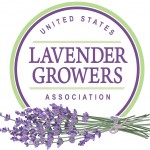2013 Harvest Report
The data compiled in this report was drawn from the 2013 Lavender Harvest Survey which many of you took the time to complete. While this report reflects information collected from a cross-section of lavender farmers – big and small, new and old, members and non-members – throughout the country, it is only being made available for current USLGA members to view. We encourage you to use the Lavender Harvest Measure Worksheet to track your harvest and to complete future surveys so we can continue to build this foundation of knowledge. If you have any questions about the Lavender...
Read More2012 Harvest Survey Results
Abstract: The United States Lavender Growers Association (USLGA) crop production survey was conducted in April and May of 2013. Sixty four (64) growers responded to the survey listing ‘Royal Velvet’, ‘Folgate’, ‘Hidcote’, ‘Buena Vista’ and ‘Melissa’ as their top five L. angustifolia cultivars. ‘Grosso’, ‘Provence’, ‘Hidcote Giant’, ‘Gros Bleu’, and ‘Super’ were listed as their top five L. x. intermedia cultivars. Between 2013 and 2015, six hundred eighty thousand, five hundred eighty (680,580) plants are scheduled to be planted by the sixty four (64)...
Read MoreLavender oil – skin savior or skin irritant?
The Following article is posted with permission from Dr. Robert Tisserand. You can also read his blog here: http://roberttisserand.com/2011/08/lavender-oil-skin-savior-or-skin-irritant/ A question came up recently on TheBeautyBrains forum: Lavender oil in cosmetics – does it cause skin cell death, and is that a problem? This was in response to the description of “lavender extract and oil” on Paula Begoun’s Cosmetic Ingredient Dictionary. Paula is known for her belief that fragrances, natural or synthetic, have no place in cosmetic products. Here are some random examples from her...
Read MoreTobacco Mosaic Virus
by: Curtis Swift, Ph.D. Swift Horticultural Enterprises, LLC., dba High Altitude Lavender Curtis.Swift@alumni.colostate.edu Introduction AMV was first described by Weimer in California in 1931 as a mosaic virus of alfalfa (Medicago sativa). Since viruses are named for the first plant in which they are identified, the virus was named alfalfa mosaic virus (Hall, 1991). Other names for this virus include lucerne mosaic virus and potato calico virus. Alfalfa mosaic virus (AMV) is a worldwide distributed phytopathogen (McDonald and Suzuki, 1983). With 600 plant species in 70 families playing host...
Read MorePhosphorus and Lavender Production
Curtis E. Swift, Ph.D., High Altitude Lavender Curtis.Swift@alumni.colostate.edu Abstract Phosphorus is an essential major element required by plants and while necessary for plant growth, an excess amount of plant-available soil phosphorus can have a negative impact on plant health and yield. It is therefore necessary to refer to the results of a soil test prior to applying any phosphorus to the lavender field. Introduction: Phosphorus is a component of certain enzymes and proteins, adenosine triphosphate, (ATP), ribonucleic acids (RNA), deoxyribonucleic acids (DN) and thus critical to plant...
Read More